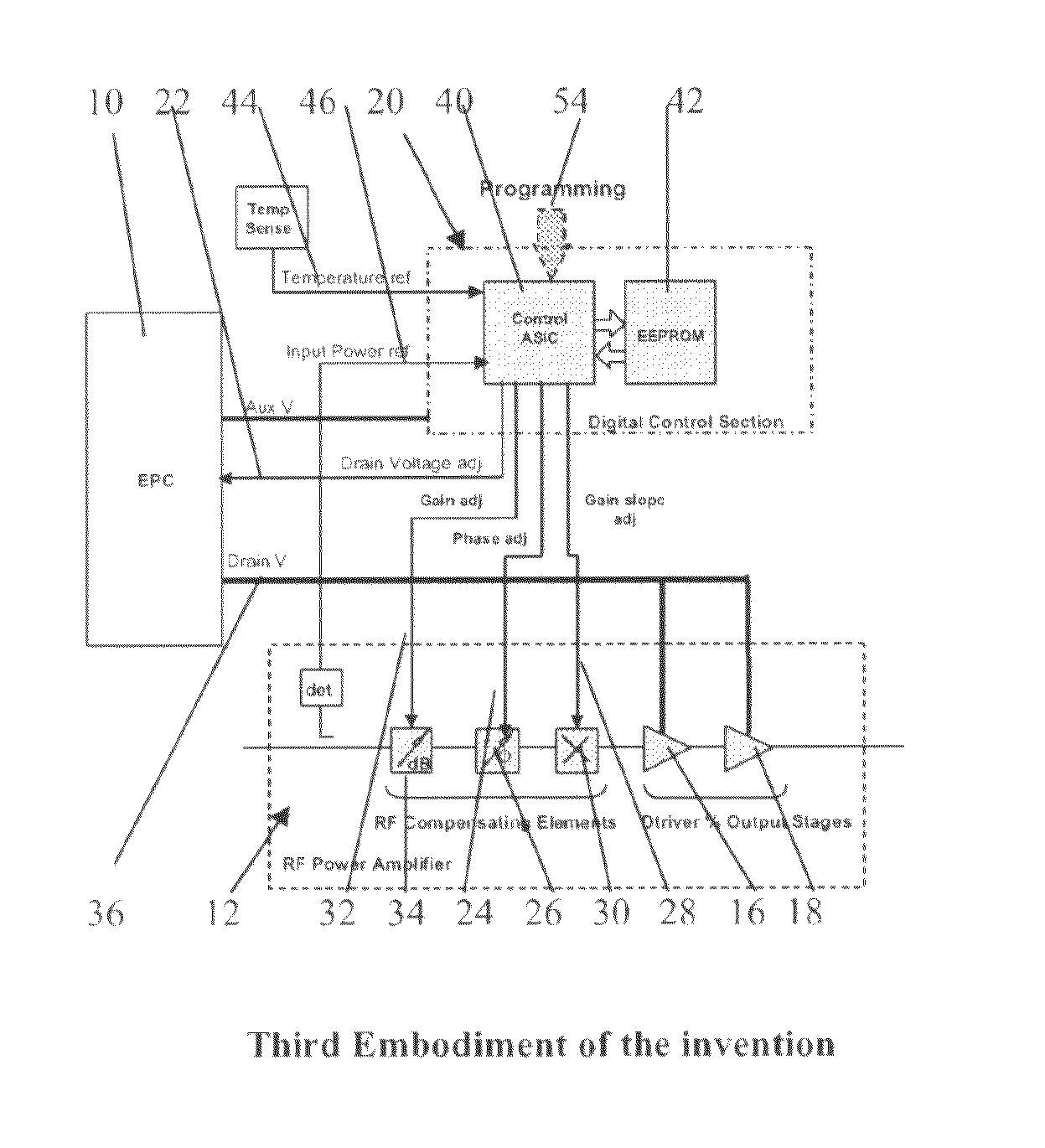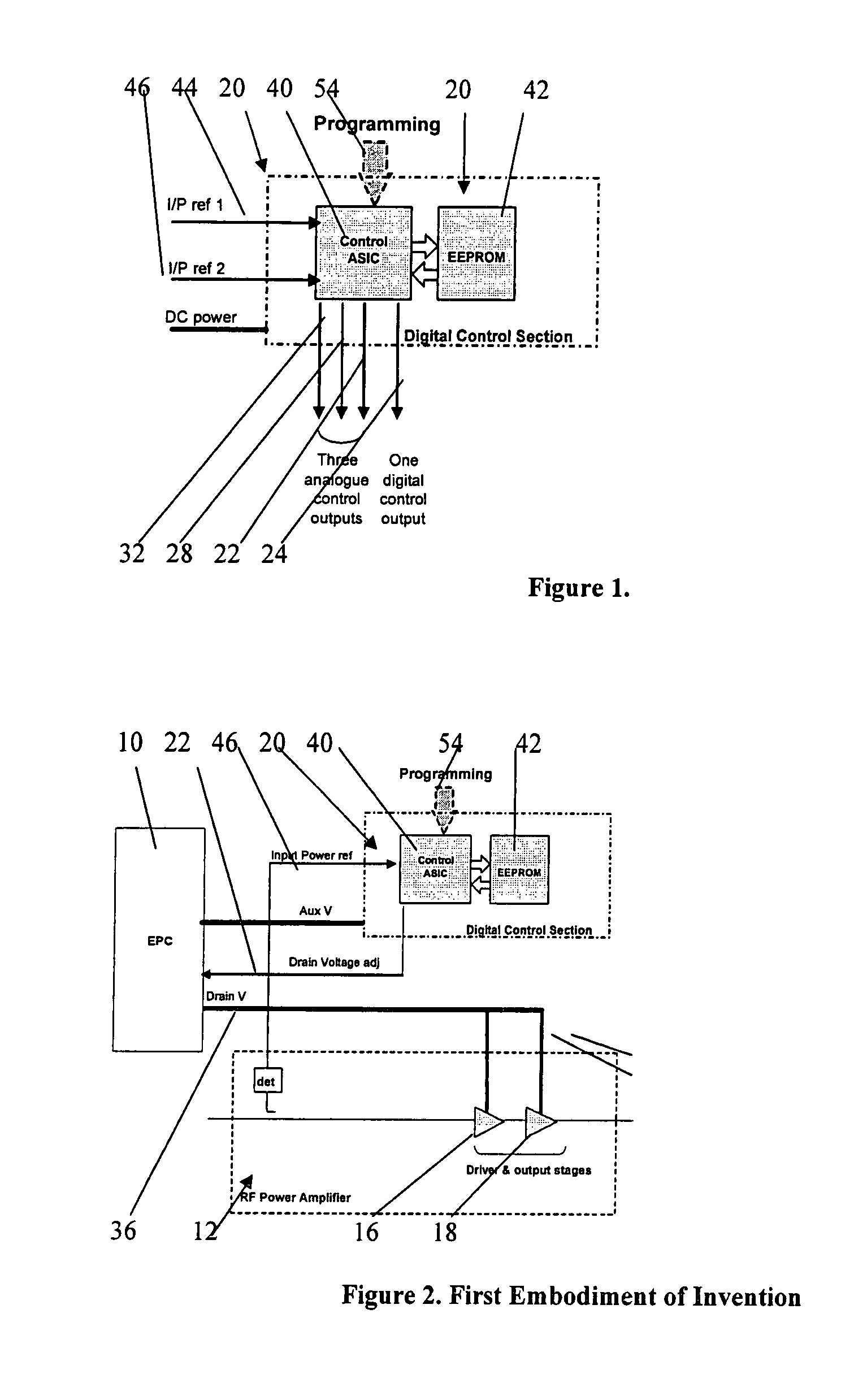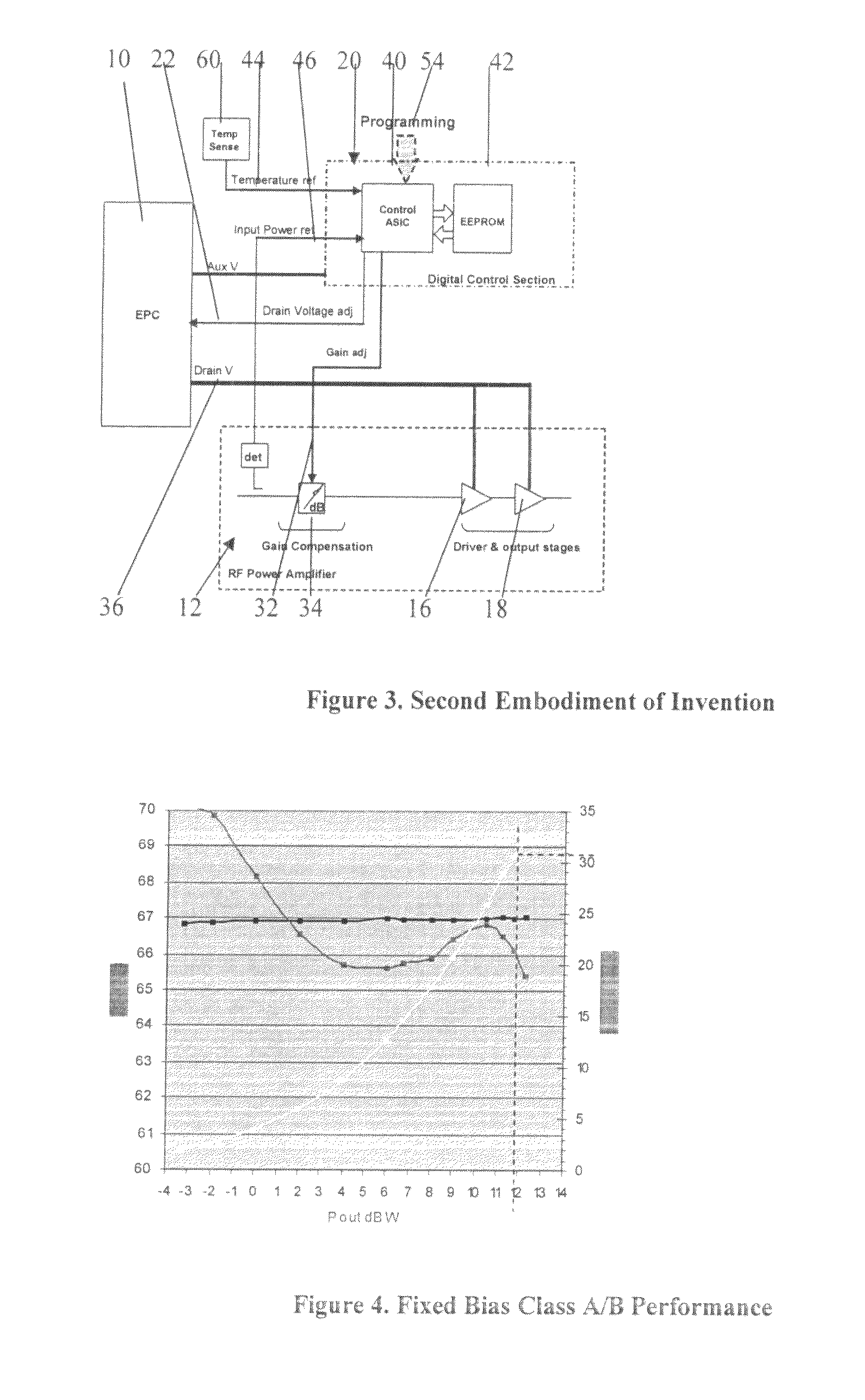RF power amplifiers
a power amplifier and transistor technology, applied in the direction of amplifier modification to reduce non-linear distortion, baseband system details, gain control, etc., can solve the problems of reducing efficiency, all the amplifiers running at less than optimum efficiency, and the technique cannot be made to work with the amplifier employing field effect transistors (fets), so as to improve the characteristics of the amplifier
- Summary
- Abstract
- Description
- Claims
- Application Information
AI Technical Summary
Benefits of technology
Problems solved by technology
Method used
Image
Examples
first embodiment
[0054]FIG. 2 illustrates the invention, similar parts to those of FIGS. 1, 9 and 10 being denoted by the same reference numeral (and for all subsequent figures). In this case the DCS 20 is supplied with a single input reference 46 from the RF amplifier 12, that being a voltage related to its input power. Only one of the DCS analogue outputs, 22, is used and this interfaces with the EPC 10 to control the main voltage supply 36 to the driver and output FET drains 16, 18. During the characterisation process the amplifier is exercised over its full input power dynamic range, and through the aforementioned software and test equipment, the EPC main output voltage 36 is digitally steered to maintain the RF amplifier driver and output stages 16, 18 at the required gain compression, in order to maintain a constant C / I ratio.
second embodiment
[0055]The embodiment of FIG. 2 is a minimal configuration. In practice, the amplifier gain may change as the drain supply to the driver and output FETs is adjusted and there will be temperature effects that may have to be dealt with. A second embodiment shown in FIG. 3 therefore illustrates a configuration of the invention, of more practical use, where the DCS 20 is also used to maintain the overall gain of the amplifier at a constant level over the operating dynamic range and temperature. A second reference input 44 is now supplied to the DCS 22 from a temperature sensor 60 mounted on the amplifier board, and a second analogue output 32 is used to drive a variable attenuator 34 (or other digital or analogue variable gain / loss device) in the RF chain. The characterisation process now exercises the amplifier over its full input power dynamic range and over the operating temperature range. In this way data is collected to not only adjust the gain compression with input drive, but also...
PUM
 Login to View More
Login to View More Abstract
Description
Claims
Application Information
 Login to View More
Login to View More - R&D
- Intellectual Property
- Life Sciences
- Materials
- Tech Scout
- Unparalleled Data Quality
- Higher Quality Content
- 60% Fewer Hallucinations
Browse by: Latest US Patents, China's latest patents, Technical Efficacy Thesaurus, Application Domain, Technology Topic, Popular Technical Reports.
© 2025 PatSnap. All rights reserved.Legal|Privacy policy|Modern Slavery Act Transparency Statement|Sitemap|About US| Contact US: help@patsnap.com



